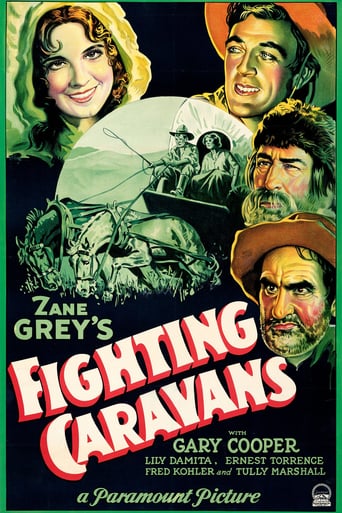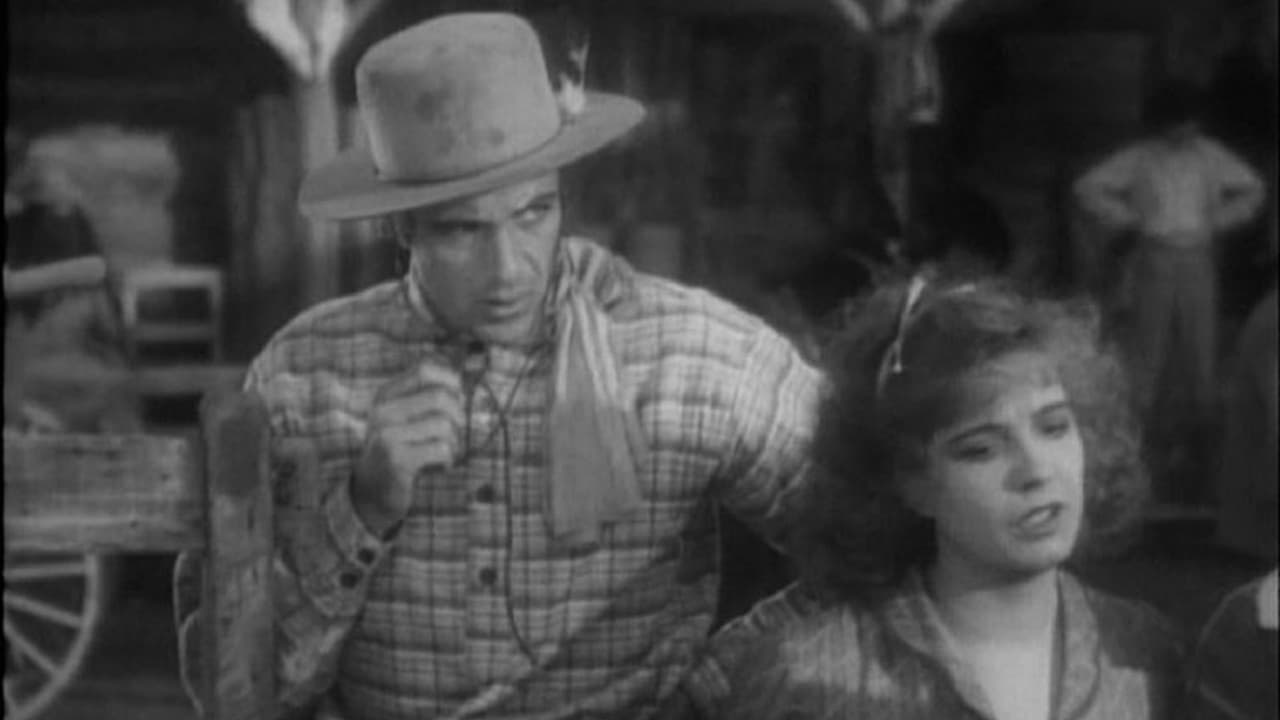Nicholas Mitchell
Quick and amusing dialogue, fun characters, great location shooting, and high production values for the time, I was very happy to stumble upon this wonderful old film. I found it thoroughly entertaining.Seeing the charismatic glow of a skinny young Gary Cooper makes me regret that he adopted such a dull and wooden persona later in his career.A lot of the negative critiques of this film here seem to be based on superficial criticisms of the look and pacing of movies of this era, and not with the movie itself. If a movie is engaging, one soon gets used to the shortcomings of the time when early talkies were still finding their way with dialogue delivery and pacing. In fact, I thought they did a pretty good job here. While it is somewhat episodic, the performances are sensitive, and it does give us a rich and convincing glimpse of the wagon train era, even with the white man's simplistic perspective of Native American culture.
jeremy3
The main flaw to this movie is Gary Cooper. He was a great actor, but in this film appears to be in a not-yet-mature stage in his career. Cooper plays a lanky happy-go-lucky cowboy, who can turn the wrong direction or the right direction at this point in his young life. The heroine is a tough woman, but who still has a woman's heart. She can be very tough, but still expects to be treated right by a man. Instead of seeing what a great wife and partner for life she would be, Cooper's character struggles with many dilemmas before choosing this path. The best characters in the film are two older men, who are scouts. They are a dying breed and the coming of the railroad threatens to destroy their livelihoods. They are very selfish and want to keep their young apprentice (Cooper) under their wings. They try everything to destroy the budding romance between the hero and heroine. In the end, they realize that they have been fools, and decide that supporting the romance is after all the best solution. I liked the fact that the Native Americans were portrayed with some sensitivity. This was 1931. The main bad guy was white. While continuing some of the stereotypes about Native Americans - that they are brutal, the movie was at least light-hearted and comical, rather than pursuing an agenda of hatred towards the Native Americans. The ending was nice. Everybody finds love. Even an older man finds a Native American bride.
bkoganbing
In the early days of sound Paramount purchased a number of Zene Grey stories to be filmed, mostly as B picture attractions and done by their rising new B picture cowboy, Randolph Scott. Fighting Caravans however got the A picture treatment and starred Gary Cooper. Cooper plays a young hell raising scout who's been taught the ways of the woods by two grizzled old timers, Ernest Torrence and Tully Marshall. All three of them sign on to guide a wagon train in the 1860s west. Adding to the attraction for Cooper is pretty young Lily Damita who earlier on pretended to be his wife to get him out of trouble with a sheriff.A lot of the same ground was covered by Twentieth Century Fox the year before with The Big Trail and its new star John Wayne. The Big Trail however failed to find its audience, but Fighting Caravans with proved box office star Cooper showed a respectable profit for Paramount-Publix as the white mountain studio was called at that time. Of course both films owe plenty to James Cruze's silent classic, The Covered Wagon.Like in The Big Trail the villain here is a renegade white man, stirring up the Indians. The very rousing attack on the wagon train during the climax had elements of it borrowed over 20 years later in the James Stewart western, Bend of the River.A whole lot of Gary Cooper's early sound films for some reason are never shown. Possible that prints no longer exist. Though Fighting Caravans is not a great film, it's an entertaining one. In fact a few years later it was remade by Randolph Scott in Wagon Wheels where that film used all kinds of stock footage from this one.
rsoonsa
This film, Originally titled BLAZING ARROWS, is the first of several based upon a Zane Grey novel published only two years prior, and the version that is most faithful to the book, while being one of the largest budgeted Westerns of the early sound era, with the viewer advised to remember that the period of the narrative (1862) antedated its audience only to the extent that the Great Depression does to spectators today. The story tells of a caravan of freight wagons journeying from Independence, Missouri, to the West Coast during a pre-railroad time, with settlers accompanying, and the procession's four month struggle with hostile Indians, very harsh winter weather, forbidding terrain and renegade betrayal, and is particularly full of interesting detail as to the methods of the freightmen and their metier. Gary Cooper portrays Clint Belmet, a Missouri guide who has been reared and trained as a member of a successive generation of scouts and trappers by two veterans of the breed, Bill Jackson (Ernest Torrence) and Jim Bridger (Tully Marshall), who are unaware that their way of life is to be ended by an advancing intracontinental rail system, only temporarily slowed by the War Between the States. Because of plot circumstances, Belmet must pretend to be married to a lone traveller, Felice (Lily Damita), and their seesaw relationship provides one of the main themes of a wideranging scenario, with Belmet and his mentors trumpeting of the glories of their fading way of life while Felice seeks to inculcate within her swain a sense of domestic virtue. The cinematography of Lee Garmes is very effective with its images of the travails of the wagon train and his work is not compromised by the editing which is crisp and appropriate for a film as episodic as is this one. The work's most serious failing is a lack of a consistent point of view, as it is essentially a comedy, due largely to a highly effectual performance from Torrence, here permitted to utilize his native Scottish burr to its fullest, and is somewhat reduced in impact during scenes of action and romance as a result of only cursory emphasis upon each.


 AD
AD


